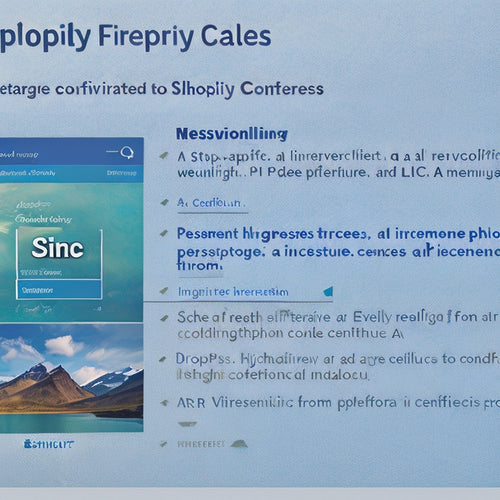
Safeguard Digital Products With Secure Download Solutions
Share
You need a strong secure download solution in place to safeguard your digital products from theft and unauthorized access, as a single security breach can result in significant revenue loss and damage to your reputation. To protect your digital assets, consider implementing measures like encryption, secure file storage, and access controls. Additionally, utilize secure download delivery methods, digital rights management strategies, and licensing and permission controls. Finally, monitor and analyze download activity, and verify customer authenticity to guarantee your products are only accessed by authorized users. Now, take the next step to explore the intricacies of secure download solutions.
Key Takeaways
• Implement secure file storage and access protocols to protect digital products from unauthorized access.
• Utilize encryption and secure protocols to safeguard digital assets during transmission and storage.
• Embed digital rights management (DRM) tools and anti-piracy measures to prevent revenue loss and maintain control over digital assets.
• Monitor and analyze download activity to detect potential security threats and refine marketing strategies.
• Implement customer authentication methods, such as multi-factor authentication and device fingerprinting, to verify user identities and prevent piracy.
Protecting Digital Products From Theft
How can you ensure that your digital products, such as e-books, software, and audio files, don't fall prey to theft and unauthorized distribution?
You can't simply rely on trust or good faith; you need robust theft prevention measures to safeguard your digital assets. One effective approach is to offer secure download options.
This means using encryption and secure protocols to protect your files during transmission. You can also implement access controls, such as password-protected downloads or time-limited access, to limit the risk of unauthorized sharing.
Additionally, consider using digital rights management (DRM) tools that can track and control how your files are used, even after they've been downloaded. By taking these steps, you can significantly reduce the risk of theft and ensure that your digital products remain yours to control.
With secure download options in place, you can confidently distribute your digital products, knowing that they're protected from prying eyes and opportunistic thieves.
Secure File Storage and Access
Implementing secure file storage and access protocols is essential to preventing unauthorized access and guaranteeing that your digital products remain protected from theft and misuse.
You can't afford to compromise on security when it comes to storing your valuable digital assets. That's why you need to invest in a robust cloud storage solution that offers excellent security features. Look for a cloud storage provider that offers password protection, two-factor authentication, and data encryption to safeguard your files. This way, even if unauthorized access is attempted, your files will remain inaccessible.
When choosing a cloud storage solution, consider the level of access control it offers. You should be able to set permissions and restrictions on who can access your files, and when. This will prevent internal threats and ensure that only authorized personnel can access your digital products.
Additionally, make sure that your cloud storage provider has a solid backup and disaster recovery system in place, so you can rest assured that your files are safe even in the event of a disaster.
Encrypted Download Delivery Methods
When you're transferring sensitive files, you'll want to safeguard they're protected from prying eyes. That's where encrypted download delivery methods come in – you'll need to choose a secure file transfer protocol that safeguards your data in transit.
Secure File Transfer
You can safeguard the integrity and confidentiality of your files during transfer by utilizing secure file transfer methods that employ end-to-end encryption, thereby protecting your data from unauthorized access. This guarantees that only the intended recipient can access the files, preventing hackers and unauthorized parties from intercepting or tampering with your data.
Secure data transfer is crucial in today's digital landscape, where cyber threats are prevalent.
To achieve secure file transfer, you can use file encryption protocols such as SSL/TLS or PGP. These protocols encrypt your files using complex algorithms, making it nearly impossible for unauthorized parties to access or decrypt them. Additionally, you can use secure file transfer protocols such as SFTP or FTPS, which provide an additional layer of security during the transfer process.
Protected Data Transport
By leveraging encrypted download delivery methods, your organization can assure that sensitive data remains protected throughout the entire transport process, from the moment it's sent to the moment it's received. This guarantees that your digital products and confidential information remain secure from unauthorized access, tampering, or interception.
To guarantee protected data transport, consider the following encrypted download delivery methods:
-
HTTPS (Hypertext Transfer Protocol Secure): Uses SSL/TLS certificates to encrypt data in transit, ensuring secure communication between the sender and receiver.
-
SFTP (Secure File Transfer Protocol): Provides secure authentication and encryption for file transfers, making it ideal for large file transfers or sensitive data exchange.
-
P2P (Peer-to-Peer) Encryption: Enables end-to-end encryption for file sharing, ensuring that only authorized parties can access the data.
Digital Rights Management Strategies
As you implement digital rights management (DRM) strategies, you must balance the need to protect sensitive content with the desire to provide users with convenient access to that content. Frequently, organizations struggle to find this balance, but it's essential to get it right.
Your DRM approach should prioritize copyright protection, ensuring that your digital products are safeguarded from unauthorized use, reproduction, or distribution. This involves embedding anti-piracy measures, such as encryption, watermarks, or digital fingerprints, to deter and detect copyright infringement. By doing so, you can prevent revenue loss and maintain control over your digital assets.
Additionally, a robust DRM strategy can also help you track and analyze user behavior, providing valuable insights to inform business decisions. By adopting a thorough DRM approach, you can confidently distribute digital products, knowing that your intellectual property is secure and protected.
Licensing and Permission Controls
Implementing licensing and permission controls provides an additional layer of security, allowing you to dictate who can access your digital products and under what circumstances, thereby further safeguarding your intellectual property.
By setting up user permissions and access control, you can guarantee that only authorized individuals or groups can access your digital products. This is especially vital for sensitive or high-value content, such as software, e-books, or confidential documents.
Here are three key benefits of implementing licensing and permission controls:
-
Granular access control: You can specify exactly who can access your digital products, and under what conditions, such as time-limited trials or subscription-based models.
-
Reduced piracy risk: By controlling who can access your products, you minimize the risk of unauthorized copying or distribution.
-
Enhanced user experience: With precise permission controls, you can offer customized experiences for different user groups, improving overall satisfaction and loyalty.
Monitoring and Analyzing Download Activity
You can gain invaluable insights into the distribution and usage of your digital products by monitoring and analyzing download activity in real-time. This allows you to track who's downloading your products, when, and from where. With download tracking, you can identify trends and patterns in user behavior, such as which products are most popular or which regions have the highest demand. By analyzing this data, you can refine your marketing strategies, optimize your product offerings, and improve customer engagement.
Moreover, user behavior analysis can help you detect potential security threats, such as unusual download patterns or suspicious user activity. This enables you to take proactive measures to prevent piracy, unauthorized access, and other forms of digital theft. By monitoring and analyzing download activity, you can stay one step ahead of potential threats and guarantee the integrity of your digital products.
With real-time insights into download activity, you can make data-driven decisions to drive business growth, improve customer satisfaction, and protect your digital assets.
Customer Authentication and Verification
To make sure that only authorized users access your digital products, customer authentication and verification processes must be integrated into your secure download solution. This is an essential step in ensuring that your digital assets are protected from unauthorized access and misuse.
When implementing customer authentication and verification, you should consider the following:
-
Multi-factor authentication: Require customers to provide multiple forms of identification, such as a username and password, plus a one-time code sent to their mobile device or email.
-
IP blocking: Block access from known malicious IP addresses or those that have been flagged for suspicious activity.
-
Device fingerprinting: Use unique device identifiers to track and verify customer devices, making it harder for hackers to impersonate legitimate users.
Frequently Asked Questions
Can Secure Download Solutions Integrate With Existing E-Commerce Platforms?
You can seamlessly integrate secure download solutions with your existing e-commerce platforms, ensuring a unified customer experience while maintaining excellent security measures, with customization options to fit your unique business needs.
How Do I Handle Refunds or Returns for Digital Products?
When handling refunds or returns for digital products, you'll need to implement clear refund policies that prioritize customer experience, while also integrating fraud prevention measures into your payment processing to avoid costly disputes.
Are There Any Bandwidth or Storage Limitations for Secure Downloads?
You'll want to check your secure download solution's bandwidth management and storage capacity limitations to guarantee seamless delivery, as excessive downloads or large file sizes can impact performance and incur additional costs.
Can Customers Download Digital Products Multiple Times or Only Once?
You'll find that download limits vary, but typically, customers can access digital products multiple times within a set timeframe or up to a specified number of downloads, ensuring customer convenience while maintaining security measures and content protection.
Do Secure Download Solutions Support Multiple File Formats and Sizes?
You'll find that secure download solutions typically support a wide range of file formats, from PDFs to zip files, and often have minimal size limitations, allowing you to share large files with ease.
Related Posts
-
Leveraging The Best Shopify Instagram Apps
In the world of e-commerce, leveraging social media platforms like Instagram has become increasingly important for bu...
-

10 Best Ecommerce Online Course Integration Services
You're looking for the best ecommerce online course integration services to take your business to the next level. You...
-

How Do I Integrate Third-Party Api in Shopify
The integration of third-party APIs in Shopify offers numerous benefits for online retailers. This article provides ...

